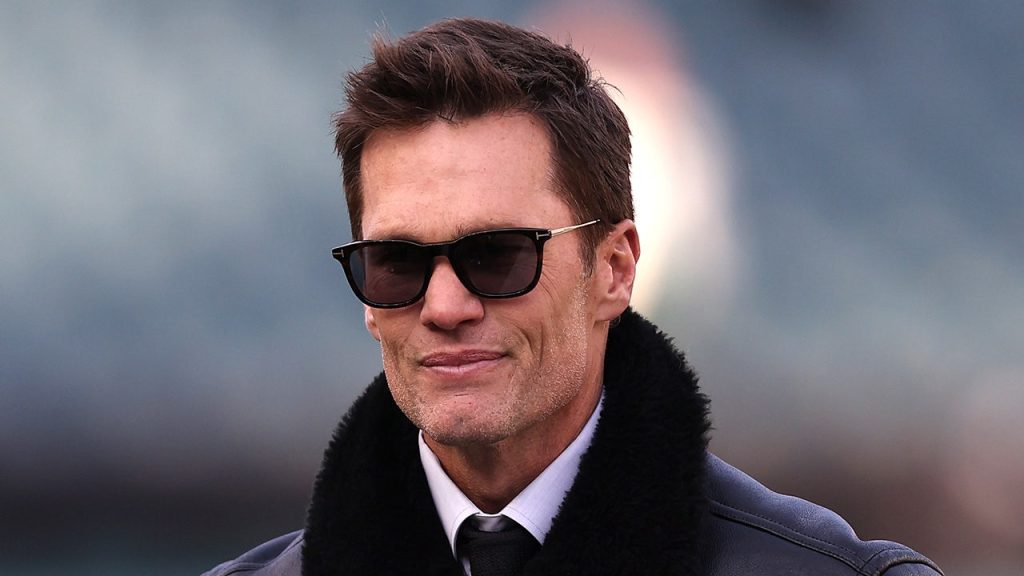Tom Brady, the legendary NFL quarterback, has ignited a debate concerning the protection afforded to quarterbacks, particularly in light of recent officiating calls involving Kansas City Chiefs’ star quarterback Patrick Mahomes. Brady’s central argument revolves around the evolving role of quarterbacks in today’s NFL. With the increasing prevalence of designed quarterback runs and scrambles, he contends that quarterbacks who choose to operate outside the traditional pocket protection should not be afforded the same level of protection as those operating within it. This argument stems from the inherent conflict between protecting quarterbacks and allowing defenders to play aggressively.
Brady’s comments were prompted by two specific incidents during the Chiefs’ recent victory over the Houston Texans. In the first instance, Texans defensive end Will Anderson Jr. was penalized for roughing the passer after hitting Mahomes high while he was throwing a pass. The second incident, which lies at the heart of Brady’s argument, occurred during a Mahomes scramble. As Mahomes slid to avoid contact, two Texans defenders contacted him near the head, resulting in an unnecessary roughness penalty. While the first instance involved Mahomes within the classic pocket protection paradigm, the second highlighted the ambiguity surrounding protection for quarterbacks who transition into a runner role. A further point of contention arose from another play where Mahomes appeared to exaggerate contact on the sidelines, aiming for a penalty that was not awarded. This latter incident fueled accusations of Mahomes “flopping” and potentially receiving favorable treatment from officials, underscoring the broader debate about how quarterbacks are protected.
Brady’s stance underscores a fundamental shift in the NFL: quarterbacks are increasingly involved in running plays, blurring the lines between passer and runner. He argues that if quarterbacks are going to operate as running backs, they should assume the risks inherent to that position. He believes that the current rules create an unfair advantage for quarterbacks who choose to run, essentially allowing them to benefit from the protection afforded to passers even when they’re operating outside the pocket. This, he contends, places defenders in a precarious position. They are tasked with tackling a ball carrier, yet they risk penalties if they tackle a quarterback with the same force they would use on any other player.
Brady further emphasizes that the only effective way for defenders to dislodge the ball from a runner, including a scrambling quarterback, is through forceful contact. He argues that the fear of incurring penalties forces defenders to play less aggressively, ultimately diminishing the quality of the game. This hesitancy, he suggests, not only disadvantages defensive players but also compromises the integrity of the sport by creating an artificial level of protection for quarterbacks who opt to run. He clarifies that the intention isn’t to imply that quarterbacks intentionally exploit the rules. However, he believes the current rules have unintentionally created a scenario that compromises the overall quality of play.
Brady argues that quarterbacks who choose to run should assume the risks associated with that decision. They have the option to slide or run out of bounds to avoid contact. But if they choose to run within the field of play, they should be treated as runners, not as protected passers. He believes that allowing quarterbacks to maintain passer protection while running essentially allows them an unfair advantage, one that undermines the competitive balance of the game. This creates a challenging situation for defenders who must balance the need to make a play with the risk of incurring a penalty.
The crux of Brady’s argument lies in the need to re-evaluate the rules surrounding quarterback protection in the context of the modern game. He suggests that the current system, while designed to protect quarterbacks, may inadvertently be doing a disservice to the game by limiting defensive players’ ability to play aggressively and effectively. This debate is likely to continue as the NFL grapples with how to balance player safety, particularly for quarterbacks, with the need to maintain a fair and competitive playing field. The upcoming AFC Championship game between the Chiefs and Buffalo Bills, featuring Patrick Mahomes, will undoubtedly bring further scrutiny to the officiating and the application of these rules.

